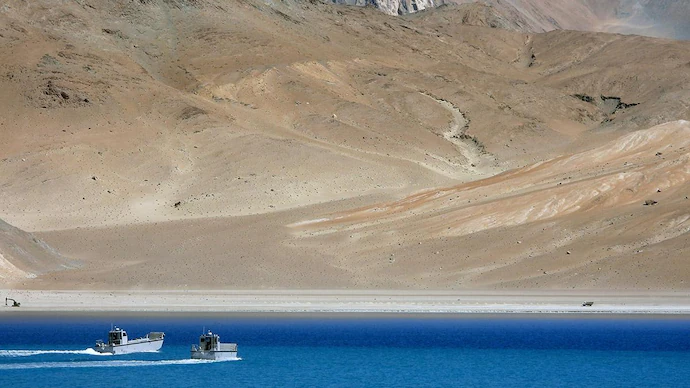
How PLA bridge across Pangong Tso confirms Pentagon concerns on China’s aggression
Days after a Pentagon record highlighted China’s competitive and coercive behaviour in opposition to its neighbours—especially India—state-of-the-art satellite tv for pc snap shots have shed extra mild at the same. China’s People’s Liberation Army (PLA) has constructed a double bridge throughout the Pangong Tso, connecting the northern bank of the lake with the southern bank for fast motion of reserves and fight electricity on both aspect.
The bridge is 10 metres extensive and approximately 450 metres lengthy and permits for quicker motion of troops or even short induction of armoured automobiles via way of means of the PLA. It offers smooth get entry to from the PLA’s Moldo garrison to the Sirjab area, which can offer the Chinese aspect tremendous gain. The bridge will reduce the gap from Rudok—the PLA’s essential base servicing its deployments withinside the Pangong Tso area—to the Line of Actual Control (LAC) to approximately 50 km, from the prevailing over two hundred km.
Military observers declare the bridge offers China operational gain as they have got executed a complementary method to help both bank of the Pangong Tso, as a result neutralising the Indian army’s tactical gain. “With no habitation withinside the area, those are exceptional army-use bridges. Infrastructure improvement in proximity is giving a clean message of [Chinese] intent,” says Lt Gen. Rakesh Sharma, former corps commander of the Indian Army’s Leh-primarily based totally 14 Corps.
The Pangong Tso and its environment are a part of the area that had sparked the army stand-off among India and China in May 2020. A month later, a violent conflict withinside the Galwan Valley—positioned only some kilometres from the Pangong lake—had claimed the lives of as a minimum 20 Indian squaddies and an unspecified wide variety of PLA troopers. Both aspects have stationed hundreds of troops, artillery, tanks and different heavy weaponry withinside the area.
The Indian and Chinese army have held sixteen rounds of corps commander-degree conferences to deescalate tensions withinside the aftermath of the fierce clashes in Pangong Tso and Galwan valley in 2020. The remaining spherical of talks changed into held in July this year, and seeing that then each aspects were running toward solving a date for the subsequent spherical of interactions. Indian and Chinese troops have, meanwhile, disengaged on the Gogra-Hotsprings at the LAC in japanese Ladakh. However, the variations over Charding Nilung Nullah junction in Demchok and the Depsang Bulge (patrol factors nine to 13) are but to be resolved. PLA troops in Depsang are blockading Indian patrol factors 10, 11, 11A, 12 and 13.
Last month, a Pentagon record had claimed that the continued army stand-off among India and China in japanese Ladakh had ended in a substantial pressure build-up via way of means of the Chinese army and established order or enforcement of ahead positions. The record, titled ‘Military and Security Developments Involving the People’s Republic of China (PRC) 2021’, stated: “At the peak of the border stand-off among the PRC and India in 2020, the PLA set up a fibre optic community in far off regions of the western Himalayas to offer quicker communications and expanded safety from overseas interception.” This set-up, the record said, gave them get entry to to near-real-time ISR (intelligence, surveillance and reconnaissance) and situational statistics for streamlining decision-making approaches and shortening reaction timelines.






